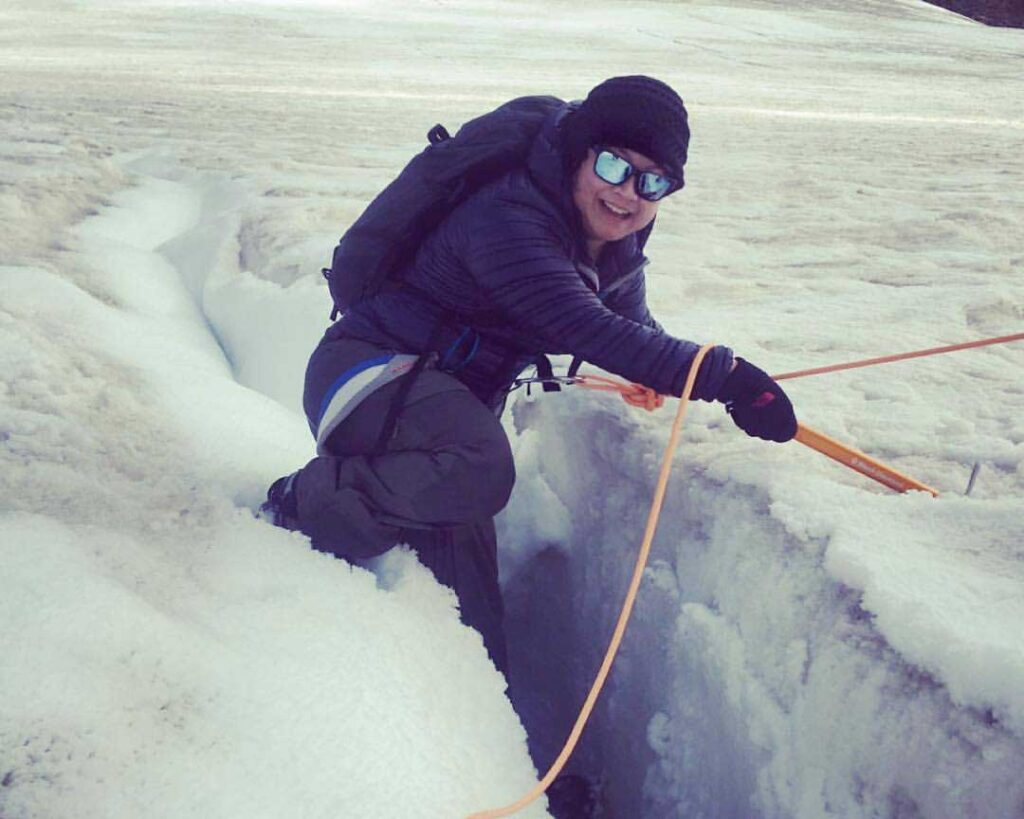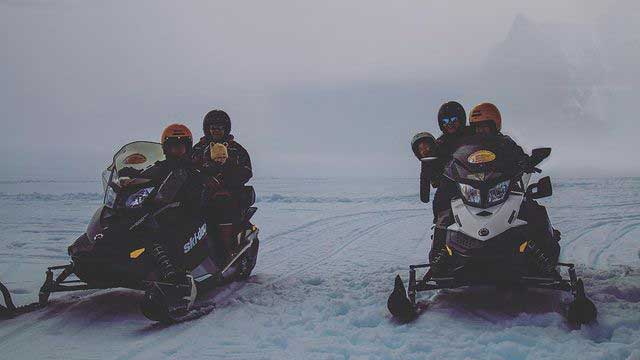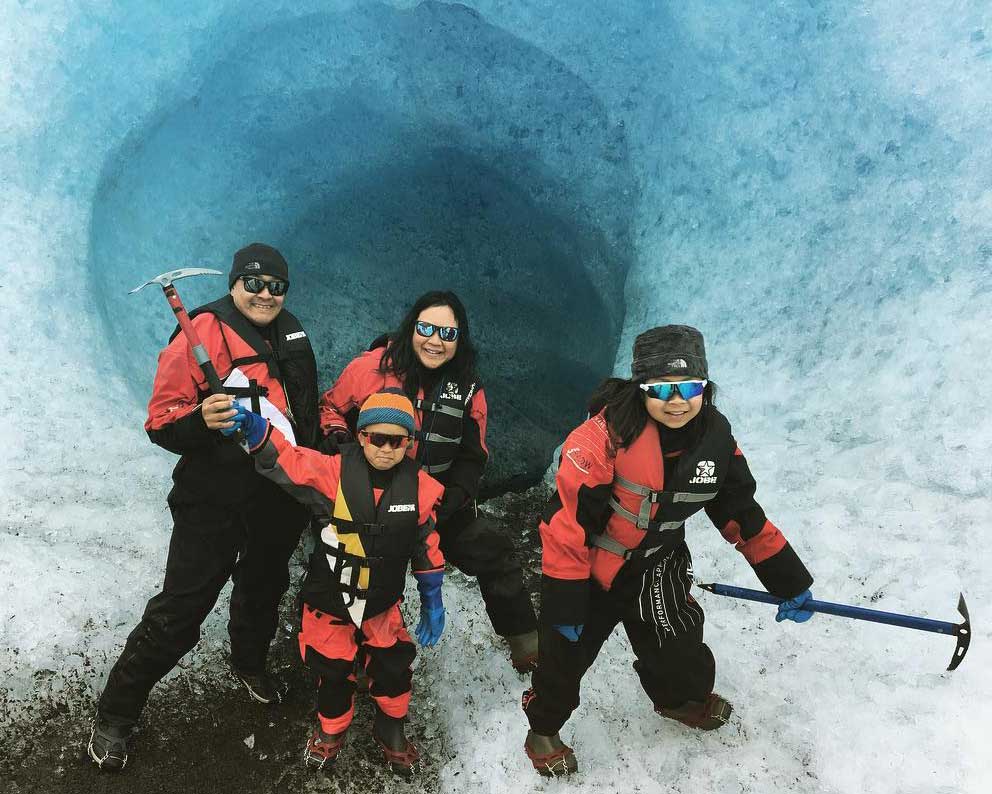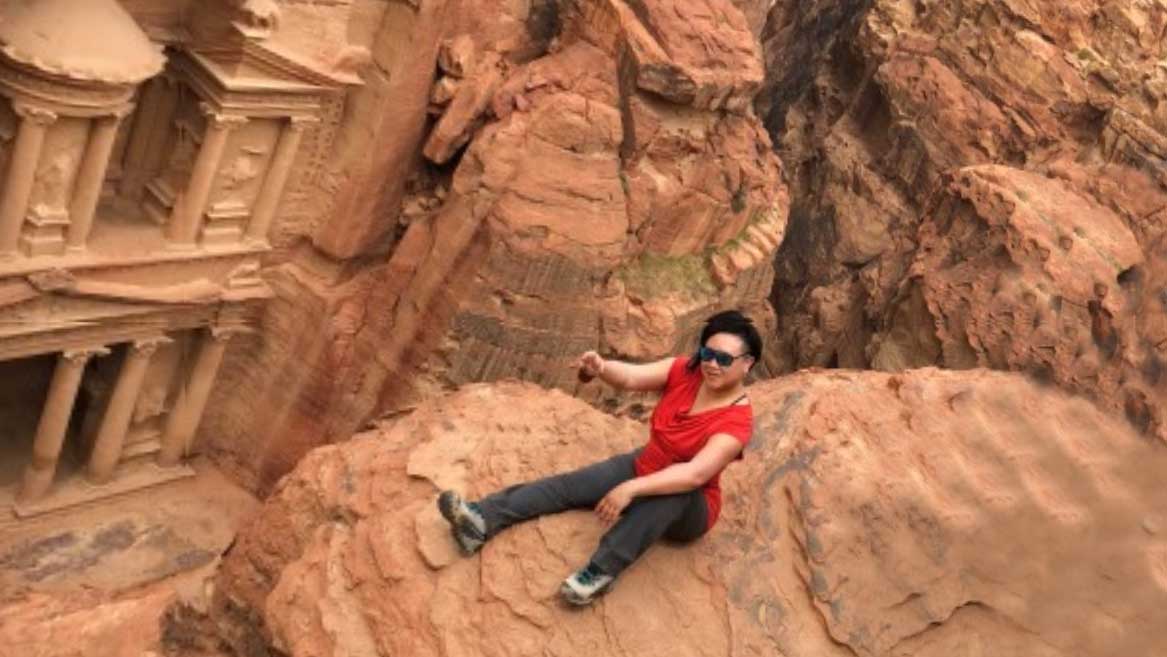When Leslie Hsu Oh started freelancing full-time in 2016, she had already been freelancing part-time for 9 years and won numerous awards for her writing from Lowell Thomas, North American Travel Journalist Association, Travelers’ Tales, and Writers Digest. She was also pregnant with her fourth child.
Before freelancing, Oh got a master’s in public health from Harvard and founded the award-winning nonprofit Hepatitis B Initiative. Realizing that sharing her personal story about how hepatitis B claimed the lives of her mother and brother could make a difference on a more global scale than the Hepatitis B Initiative, Oh transitioned from public health to her lifetime passion of writing, obtained a MFA in creative nonfiction and wrote Fireweed: A Memoir about “making sense of this messy world when you lose everything that made sense.”
At twenty, Oh had white water rafted, spelunked, hiked, and ridden on horseback through nearly all the national parks in the United States when both her mother and eighteen-year-old brother died from the same disease. Alienated by her father’s cultural beliefs to save face, move on, pretend nothing bad happened, Oh turned to the natural world and the indigenous people most intimate to these places for answers. Fireweed: A Memoir is about finding a place or home to anchor yourself and your descendants to even if it doesn’t belong to you.
She’s published excerpts of the memoir in various publications including Travel + Leisure, Backpacker, Alpinist, and Alaska Magazine.
Now, she lives in North Lake Tahoe, California with her husband and four kids. Her writing and photos are in Conde Nast Traveler, National Geographic, Outside Magazine, Vogue and more. Her work has been named among the distinguished stories of the year by Best American Essays. She continually wins awards for her writing and is known for taking her kids at a young age on adventures around the world such as snowmobiling with her 10-month-old on a glacier concealing active volcanoes in Iceland or rappelling down a waterfall with her 13-year-old who had a fractured wrist.
Here’s what Oh has to say about her experience freelancing.
Year Started Freelancing: 2007
Age When Started Freelancing: 34
Preferred Pronouns: She/her

What is your “about you” elevator pitch?
I’m an author, editor and photographer with a focus on indigenous knowledge, sustainable travel, outdoor adventures and gear, art and culture, environment, family travel, food, health, and wellness.
Although my heritage is Chinese, I was adopted by a Tlingit and a Navajo family. My Navajo name means journey with caring, or journey to bring out gifts, which I feel aptly describes my goal as a storyteller and a traveler to serve and make a difference in the places and people I explore.
What did you do before freelancing?
When my mom and my brother died of the same disease [Hepatitis B], I lost my faith in medicine. I got a master’s degree in Public Health from Harvard. I worked in DC at the US Department of Health and Human Services’ Office of Disease Prevention and Health Promotion (that’s the office in charge of healthfinder.gov). And I served as a federal liaison to the White House Initiative on Asian Americans and Pacific Islanders.
The same year that I started at Harvard, I also founded a nonprofit [The Hepatitis B Initiative] that provides free screenings and vaccinations for hepatitis B, because that’s what my mother and my brother died of. That nonprofit is still running today in several states offering free hepatitis B, hepatitis C, cholesterol, glucose screenings, and flu vaccinations to these communities: Afghanistan, Bangladesh, Burmese, Cambodian, Cameroon, Chinese, Egyptians, Ethiopian, Filipino, Ghanaian, Hmong, Indian, Indonesian, Korean, Laotian, Mongolian, Moroccan, Nepalese, Nigerian, Pakistani, Saudi Arabian, Sierra Leone, Somalian, Sudan, Syrian, Taiwanese, Thai, Vietnamese, and more.
I always wanted to be a writer, but that wasn’t something that my family supported. But after working in public health and saving people’s lives through screening and vaccinations, I realized I could reach a larger audience by telling my personal story. So that’s why I ended up pursuing an MFA in creative [nonfiction] writing at UAA [University of Alaska Anchorage].
What made you decide to do an MFA versus writing without a second degree?
The MFA carved out three years where I focused on my craft. I had a team of advisors who honed my body of work, which in the end was an early draft of my memoir. And of course, the MFA is a great way to network with accomplished writers, that’s where you meet your mentors who can sometimes refer you to their agents. An MFA is also a terminal degree, so it gives me the flexibility of teaching at a university.
What made you decide to start freelancing and get into journalism?
Once I finished my MFA, I started freelancing for First Alaskans Magazine, a print publication that “celebrates and uplifts Alaska Native peoples, communities, and their ways of life.”
At the same time, I taught creative writing. I started full-time freelancing after I moved away from Alaska and UAA stopped allowing lower 48ers to teach.
I’ve always wanted to be a travel writer. That was my dream. But I always thought it was impossible, especially for a mother of four, until I started getting invited to speak at conferences as a travel writer.
The magazine Misadventures did a profile on me and they called me a “force of nature” and a “badass.”
What is it like having 4 kids and being an outdoor writer?
I married a man who shares my passion for the outdoors. When I first got pregnant, we had just moved to Alaska and we had all these grand plans to go heliboarding and snowmobiling.
I remember crying about [getting pregnant], but then my husband said, “Don’t worry. Just because we have kids doesn’t mean we can’t still do all the things we love to do. I’ll just carry them on my back. We will make it work.”
What are some of your favorite stories you’ve written about outdoor adventure with your kids?
Conde Nast Traveler published a story about our adventures in Iceland which included our 10-month-old snowmobiling in Iceland’s Vatnajökull National Park. She was so tiny that they told me to just tuck her in my jacket and I rode behind the owner.

We started all our kids snowboarding and rock climbing as soon as they could walk so there’s a couple stories in the Washington Post and the Alpinist about facing their fears and how it was important for me to get them into these activities that we enjoyed doing right away.
One of my first Backpacker stories was about hiking a glacier when my son was two, and my daughter was five. This outfitter helped me figure out how to strap adult instep crampons on their feet so we could hike a glacier in Wrangell-St. Elias National Park. My son had just learned how to walk and we just kept one eye closed because we’re like, he is going to accidentally kick his sister or himself and there’s gonna be blood. But he ended up doing great, and none of them got injured, thank God.

My favorite story and photos were just published in the Feb 2021 issue of Travel + Leisure about teaching the kids resilience in Glacier Bay National Park.
What has it been like freelancing with kids?
When they were younger, they often played in my lap when I was writing. Sometimes they’d curl up and fall asleep in my arms. They also liked to build a Batcave under my desk.
My oldest is now 15 and my son is 12, so now I’ve got extra babysitters that can watch the younger ones [7 and 4].
I do the bulk of my writing at night when everybody’s asleep, because when they’re all awake they interrupt my thoughts every five minutes with “I’m hungry” or “I need help with my homework.”
So what I’ll do during the hours that they’re awake is research, querying, social media stuff or check my emails and that sort of thing. But the interviews, actual creative process and working on craft and revisions, that kind of stuff I have to do at night when I can think. Or, I will negotiate two nights when my husband is available to take care of the kids—that’s about as long as I can leave without causing the whole family to completely fall apart—and I just go to a hotel in my neighborhood just in case he forgets to pick them up from school or something like that.
How do you find the right clients?
I’m grateful that now editors approach me for stories. Editors tell me that I come highly recommended or say something like “you are very much top of mind around here” or that they can’t think of anyone else who could write a particular story except me.
This happens after you’ve built up enough national clips and proved to editors that you can turn things in on time with relatively little typos.
Breaking into the print side of magazines is a bit more obscure. I’ve always been told you have to work your way up from the front of the book. But as I mentioned I started in print with First Alaskans Magazine and in March 2020 when COVID hit, a Travel + Leisure print editor reached out to me and asked, “I’m looking for stories about a US-based adventure and I thought about you. Do you have any stories in mind?”
I wondered, Where did she find me? As it turns out three years ago, I had pitched her ideas and even though she never ever responded, she kept me in mind. So it just kind of shows you sometimes when you’re frustrated about pitching editors, and you don’t hear anything, you never know if they’ll contact you in the future.
What do you like most about freelancing?
I feel pretty lucky that I found a partner who supports my dream of being an adventure outdoor writer. It does give me the opportunity to do a lot of cool things on my own, but also with the family.
Like when the Adventure Travel Trade Association invited me to Jordan to canyoneer, sail, dive, cook with the Bedouins, swim in the Dead Sea, and hike their highest mountain in Jordan, my family was very jealous.
So I flew my family out after my trip. I knew I had to take them to Petra and the Dead Sea, so those were planned, but then the rest of it [wasn’t]. I ended up writing about taking them on a playdate with a Bedouin family (a dad and two moms who had 15 kids). It was eye-opening for my kids to see how other kids live in the world. My kids learned how to milk a goat and when my kids try to drink it, the Beduoin kids said , “Oh, no, no, no, no, no, your stomach is not gonna really handle that.”
The story was published in Saveur Magazine.
I like to give my kids experiences like that and I think that’s what I appreciate about my job. There was this plaque my mom had in the kitchen that said, “I hope my children always remember that they had a mother who had time to play.” So I love that my kids are always talking about the adventures that they’ve done with me.
Plus as a freelancer, I’m the parent that’s there for them if they are sick and have to stay home. When COVID changed everything and I had to chauffeur the kids to school, snowboard team practice, ballet lessons, or volunteering because there’s no buses or carpools right now.
Freelancing gave me the flexibility to drop off two kids in one school half an hour away, then the oldest in high school about 45 minutes away, then park by the Truckee River where I know there’s an Internet hotspot to write or interview sources and basically transform my car into an office until I have to pick them up.
How do you get on PR travel adventure trips?
PR people will contact you once your travel stories publish. You can also set up your own trips by contacting the tourism board or outfitters in the destination you’re interested in visiting.
What tools do you use for writing?
I use the Pomodoro method. I find it to be useful when you have children because it’s easy for me to say to my kids, “my timer is on do not bother me until this bell goes off.” And it’s reasonable because it’s like 25 minutes and they can handle that.
Recommendation: These YouTube pomodoro timer videos provide a 2-hour video with the work and break times and include music or atmospheric sounds – Work in Hogwarts or use a Study With Me session.
If you could give any advice to a newer woman freelancer getting into the outdoor industry, what would it be?
- Read and study the dream publications you want to write for. Then, pitch to them.
- Be aware of land acknowledgement. Melissa Shaginoff, who is part of the Udzisyu (caribou) and Cui Ui Ticutta (fish-eater) clans from Nay’dini’aa Na Kayax (Chickaloon Village, Alaska), put it best: “Learn from indigenous ways of being. Land acknowledgement is a framework of building relationships with people and working towards equity because it is an opportunity to publicly recognize people, work, effort, and long histories. Land acknowledgement is not reparations. It is a powerful gesture. It can open up the door to starting a relationship with somebody. Can lay out what we need to do. What do we need to know about work and history of indigenous peoples. What do we need to do to support them and lift the work they are doing within their own tribal communities and tribal sovereignty?”
- Understand the difference between cultural appreciation vs cultural appropriation. [This is one informational resource to learn more about this, though there are many out there.]
- Respect why a source might not want their language italicized or how they want their non-English names published or tribal affiliations recognized. If an editor insists on eliminating accents or removing clan or house names or tribal affiliations for ease of reading, then be prepared to defend your source. For example, one time a source complained, “I look at this as just another chance to eliminate our people, our names, our history (which identifies us) across the board! They are winning when it comes to situations such as this.” I explained this to my editor and she threatened to kill the story. That is a risk you need to be willing to take.
- Finally, always be generous with your fellow colleagues. If you turn down an assignment, recommend a friend. If a colleague asks for a referral, trade contacts. Pay it forward.
Learn More About Leslie Hsu Oh
If you want to learn more about Leslie Hsu Oh and see more of her award-winning work, check out her website or follow her on Twitter, Instagram, or Facebook.
A few of her award-winning pieces:
- Talking to kids about xenophobia (National Geographic)
- Warp Thread (Fourth Genre)
- The Couple in Trouble (Outside)
If you found Oh’s advice useful, consider buying her a coffee or gifting childcare! You can find her on Venmo at @lesliehsuoh.

